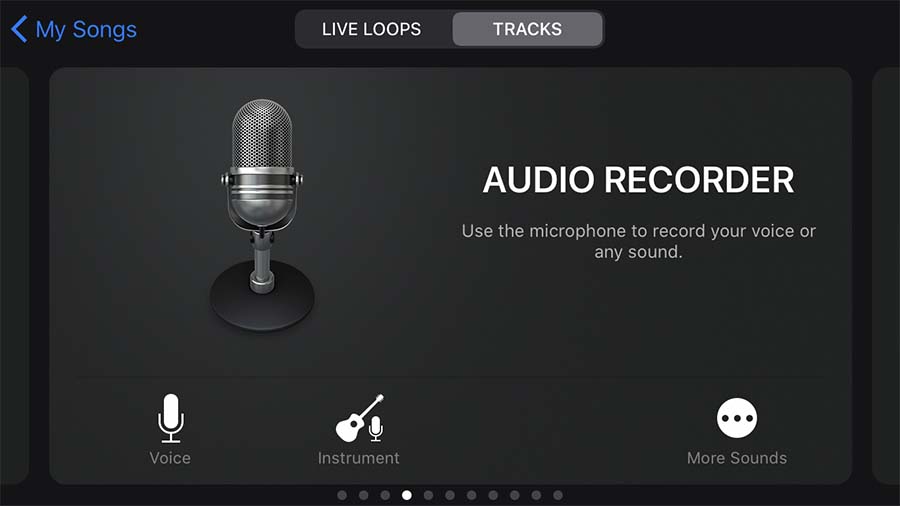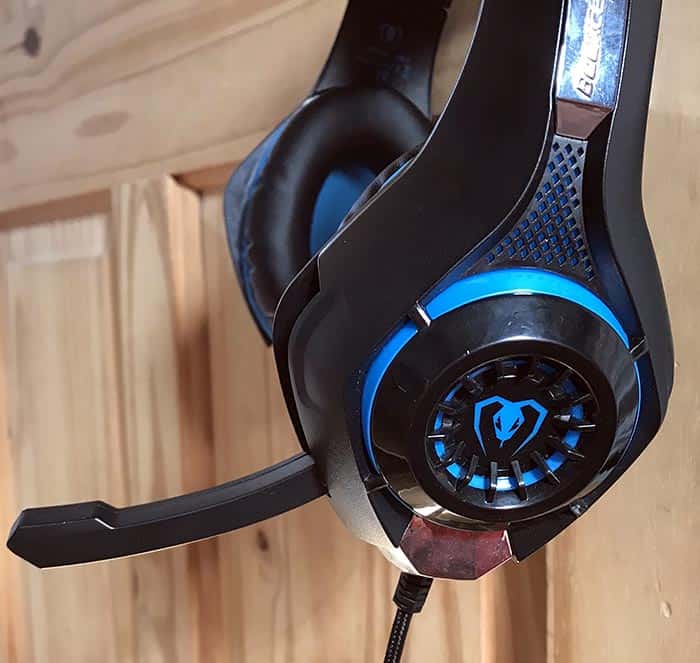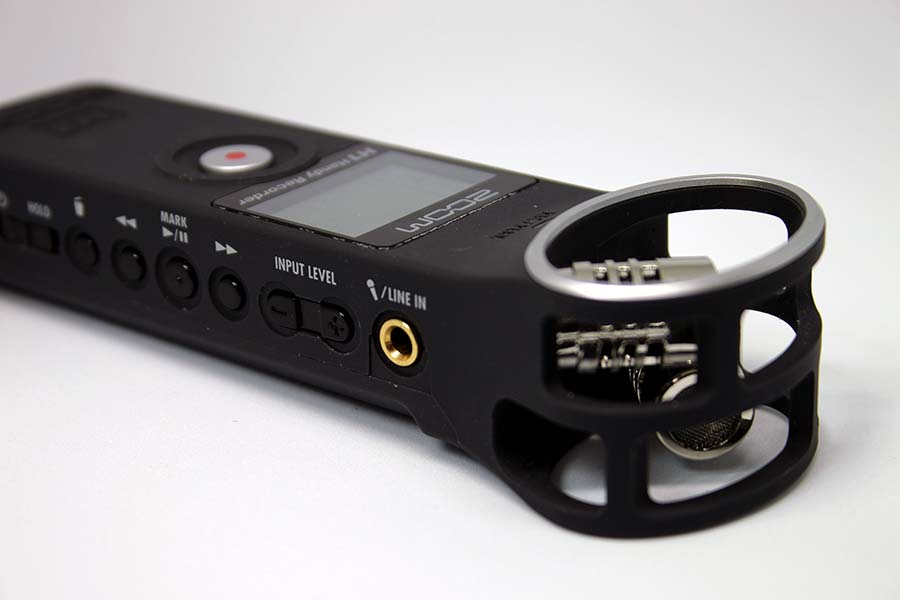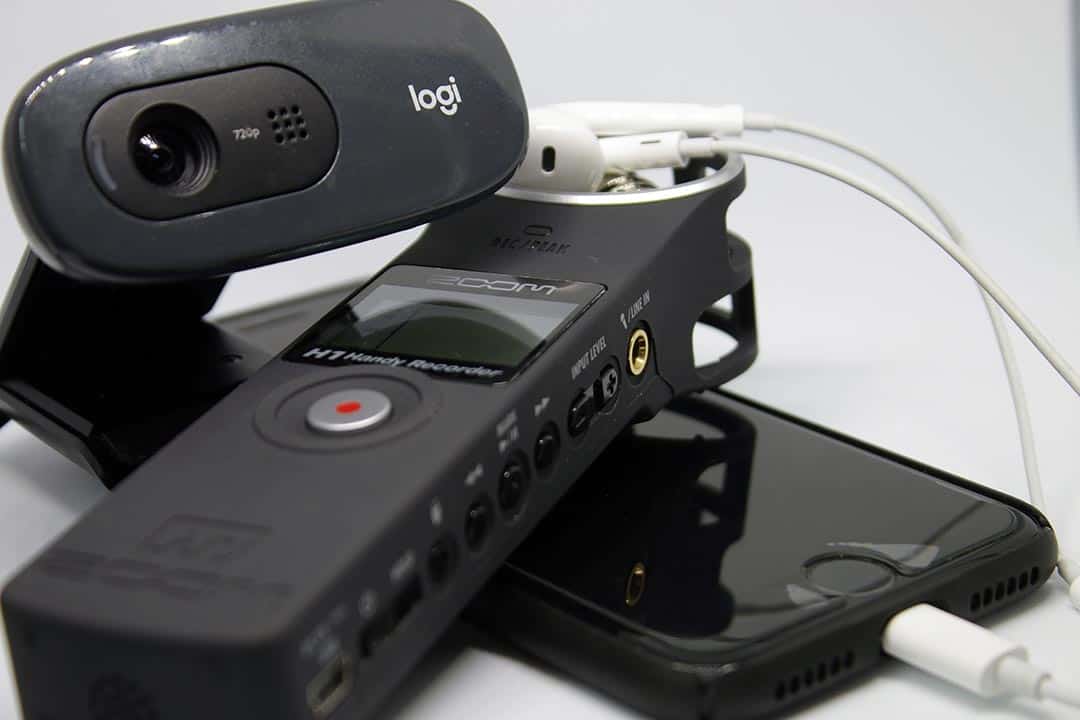Search for ‘podcast’ on Amazon and you’ll be presented with a myriad of products. Microphones, mixers, headphones, the list goes on. What if you’re just at the stage of wanting to try out podcasting without investing a lot of money on equipment though, is it possible to do without even a microphone?
In this article, we explore the options available and weigh up the pros and cons of each one. First though, let’s clear something up…
Some sort of microphone is required to record your podcast. However, this doesn’t have to be an expensive external microphone. It could be the one which is built into your phone, your laptop, your earphones or even your webcam. You could also use a handheld recording device or gaming headset.
Throughout the piece, audio clips will be provided so you can directly compare the sound quality of each option. It’s worth noting at this point that all these options are far from ideal and there are some major flaws with the audio quality of each one. However, there are some that are better than others for getting started if you don’t want to invest in a quality microphone straight away (once you are ready, see our top recommendations here – budget options included).
Table of Contents
Option 1 – Use Your Phone
If modern smartphones are good enough to shoot 4k video for YouTube then they’re good enough to record audio for your podcast.
All phones have an in-built microphone (as it’s necessary to make phone calls) but you can improve the sound quality by plugging in something like Apple EarPods (if using an iPhone) as they have a microphone built into them. These ship with new iPhones so it’s likely that you have a pair to hand.
Have a listen to the audio clips below – both are recorded directly into the Garageband for iPhone app. The first one is just using the phone and the second one is via the Apple EarPods plugged into the same phone.
These are essentially raw audio clips, however they are both normalized to bring them up to the same level. You can hear that when using the EarPods, the sound is fuller than when recording into the iPhone without them. However, using the EarPods introduces what I would say is an unacceptable amount of noise so this would need some work in post to clean it up. Neither sounds terrible though so you could produce a podcast episode using this sort of minimalist setup.
If you’re an Android user, an alternative to Garageband for recording using your phone is Recording Studio Lite which is free (although there are some paid premium features).

Option 2 – Use Your Laptop’s In-Built Mic
Nearly all laptops will come with an in-built microphone and it’s possible to use this to record your voice straight into your computer.
If you want something super simple for recording, you can use QuickTime on Mac or Voice Recorder on PC. If you want more control, there are some great free options available too. Audacity is available for both Mac and PC and then there’s Garageband for iOS. For beginners on either OS, Audacity is a great choice.
One thing to keep in mind when opting to go down this route is that the quality of in-built laptop microphones can vary greatly. To illustrate just how much of a difference this can make, have a listen to the two audio clips below. The first one was recorded using my MacBook Pro’s in-built mic, the other was using my old Windows laptop (which I’m actually using right now to write this article!). The Windows laptop has been upgraded to run more RAM and an SSD so it works fine as a day-to-day workhorse machine but of course it still retains the 10 year old in-built mic.
As you can hear, there’s a huge difference between the two. Both are pretty hollow but there is so much noise in the second clip that it would make for a really poor-quality podcast recording. Of the options so far, the phone is in the lead…
Option 3 – Use Your Webcam
We’ve established that in-built laptop microphones aren’t the best quality for podcast production but what about an external webcam? Most some with an in-built mic so we thought it was worth putting it to the test – will it be in-line with the quality of the mic built-into the laptop or will it be an improvement? Let’s see…
For this test we used a Logitech C270. It’s a budget webcam but for the price, does work really well for Zoom calls etc… Here is a clip of the audio, again with no enhancements apart from normalization.
I’m sure you’ll agree that it’s actually a step backwards from the in-built laptop options, certainly that of the MacBook Pro. It’s nowhere near as noisy as the Vaio but the sound is hollower and more distant despite the Logitech being positioned fairly close to me when recording.
Let’s move on…
Option 4 – Use a Gaming Headset
If you’re a gamer, you probably have an old (or shiny new) headset lying around somewhere. If you’re not a gamer, does your son/daughter/wife/husband etc… have one in the house? If you have access to one, this is a great option.
I’m no gamer but my son is so I plugged his inexpensive headset into my MacBook Pro to see what it sounded like. For simplicity, this clip was just recorded using QuickTime. Have a listen to the audio clip before to see what you think.
Much better. Of course, it doesn’t compare to my preferred podcasting microphones but to get started without an investment in any gear, it’s the best option so far in terms of sound quality.
If you’re interested in the model of headset I used, it’s this one (image below).

Option 5 – Use a Handheld Recording Device
OK, you may not have one of these at the back of a drawer somewhere but then again you might. We’re talking about a small handheld Dictaphone type unit. The advantage with something like is that it’s portable so you could try out different rooms in your house to see which gave you the best results (top tip: try recording under the bedsheets or in a wardrobe full of clothes – all sound reflections are dampened and you can get a lovely warm sound from your recording).
Another advantage of a unit like this is that it will record anything that it picks up so if you have a second host or are interviewing a guest, place this in the middle of you and you can record your whole show on it. OK, you won’t end up on separate tracks, but the purpose of this article is to get you going for little or no cost.
To demonstrate the type of audio you can get with this sort of setup, I’ve used my trusty Zoom H1. It’s a very simple handheld recording device that I use mainly to run a feed into from my main recording unit when I need a back. It’s perfect for this use case too though.
As you can hear, we have a little bit of noise, but my voice sounds much warmer and fuller than any of the other options and yes, I did use the bedsheet trick! The beauty about this is that if you invest in a unit like this, you are unlikely to ever want to sell it even as you build up the rest of your podcasting equipment. It is hugely versatile.
The difference with something like a Zoom H1 is that it records directly onto a micro SD card which again from a portability perspective is great.

Conclusion
So, there we have it, you do need some form of microphone to be able to record your voice and therefore your podcast but there are plenty of options available with items you probably already own.
Which one would we recommend? It depends on the situation, but the following points may help you decide.
- If you don’t want to spend any money at all, use your phone. If you have a pair of Apple EarPods or an Android equivalent, use those
- If you have access to a gaming headset, plug it into your laptop and record directly into some free software like Audacity (Mac and PC), QuickTime (Mac), Voice Recorder (PC). Audacity will also give you plenty of editing options, so I’d recommend using that
- If you’re regularly recording on location or with multiple people, I’d suggest looking at a handheld recorder like the Zoom H1 (or newer model the Zoom H1n)
- The laptop mic and webcam options would be the least recommended

